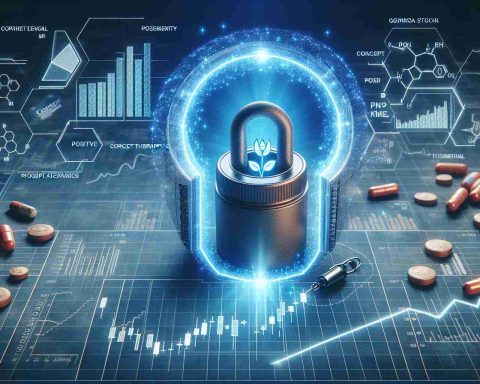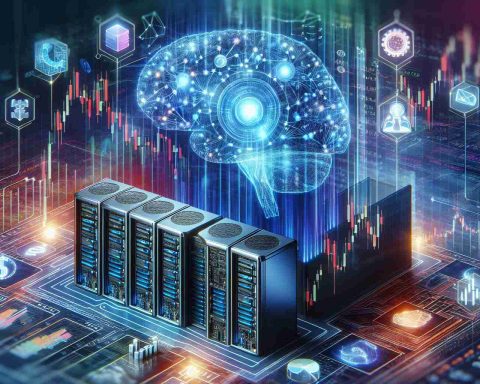As technology evolves, so does the landscape of cyber threats facing businesses and governmental institutions. Recent trends indicate that the integration of artificial intelligence (AI) into various sectors has not only enhanced productivity but also opened new avenues for malicious actors to exploit vulnerabilities in systems.
The potential for cyber attacks has been amplified by the sophistication of these technologies. For instance, the German air traffic control system recently experienced a significant breach, highlighting the urgent need for organizations to bolster their cybersecurity measures.
Industry experts warn that traditional security protocols may no longer suffice. With AI enabling cybercriminals to automate and intensify their efforts, the risks may escalate beyond what was previously anticipated. Companies are urged to adopt a proactive stance, employing advanced security solutions and implementing strategic training programs for personnel.
Furthermore, collaboration among entities to share threat intelligence has become paramount. By strengthening alliances and fostering open communication about emerging threats, organizations can better prepare for potential attacks. In this new digital frontier, staying vigilant and adaptive is essential to safeguard valuable data and maintain operational integrity.
Ultimately, the continued advancement of AI necessitates a reevaluation of security strategies across all industries. Only through consistent innovation and collaboration can businesses hope to navigate the complexities of modern cyber threats effectively.
The Rising Threat of Cyber Attacks in the Age of Artificial Intelligence
As society increasingly relies on digital solutions and artificial intelligence (AI), the risk of cyber attacks is becoming more pronounced. The intersection of AI technology and cybersecurity has transformed the threat landscape, making it essential for organizations to understand the new risks they face.
What are the most significant types of cyber threats supported by AI?
AI-driven cyber threats include deepfakes, automated phishing schemes, and sophisticated malware attacks. Deepfakes, powered by AI, can create misleading video or audio content that can manipulate public opinion or impersonate individuals, creating potential risks for misinformation. Automated phishing uses AI to personalize scams at scale, making them harder to detect.
How are organizations currently addressing these threats?
While many organizations recognize the importance of strengthening their cybersecurity, many still rely on outdated security measures. Advanced AI systems can analyze vast amounts of data to identify vulnerabilities, but businesses must also invest in human capital by training staff to recognize the signs of an attack. Cyber threat simulation exercises can prepare personnel for potential breaches.
What are some key challenges in combating AI-driven cyber threats?
One of the biggest challenges is the rapid pace of AI development. Cybercriminals can leverage the latest technologies faster than organizations can implement defensive measures. Additionally, the lack of standardized regulations around AI and data privacy further complicates compliance and security efforts.
Are there controversies surrounding the use of AI in cybersecurity?
Yes, there are ethical concerns regarding privacy as AI systems can collect and analyze large amounts of personal data. Additionally, the potential for AI to be weaponized raises questions about accountability and the consequences of its misuse. There is also debate over the balance between security and civil liberties, as increased surveillance may infringe on individual rights.
Advantages and Disadvantages of AI in Cybersecurity
The advantages of integrating AI into cybersecurity include enhanced threat detection through advanced algorithms that can predict and respond to attacks in real-time, as well as the ability to process enormous datasets beyond human capability. However, disadvantages include the potential for false positives, which can overwhelm security teams, and the risks of AI systems being hacked or misconfigured, leading to vulnerabilities.
What actions can organizations take to bolster their defenses against AI-related cyber threats?
Organizations should adopt a multi-layered security approach that combines AI-based tools with traditional cybersecurity practices. Regular updates of software, comprehensive incident response plans, and continuous employee education programs are vital. Collaborating with technology partners to share threat intelligence can also enhance an organization’s ability to respond to evolving threats.
In conclusion, the rising threat of cyber attacks in the age of artificial intelligence is a complex challenge that requires both technological and human-centric solutions. Organizations must stay informed and adaptive, rethinking their cybersecurity strategies to leverage the apositive aspects of AI while mitigating inherent risks.
For more information on cybersecurity and AI, visit cybersecurity.gov and nist.gov.

















